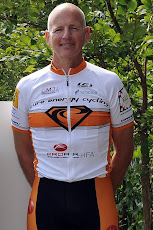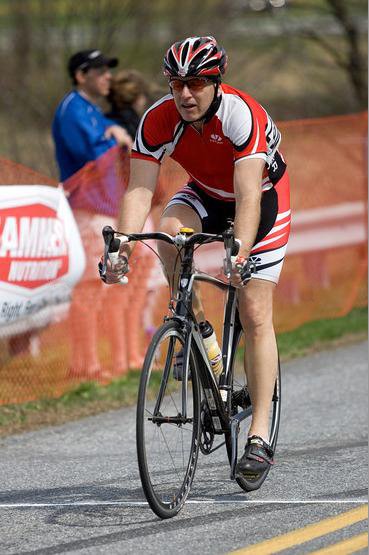
For those of you that don't train with Power, the only other sensible/practical way to train (in my opinion) is with a Heart Rate Monitor. But, how do you setup your HR Training Zones (TZs)? Do you set TZs up as a percentage of your HRmax? Do you set TZs as a percentage of your LTHR? If you read Sally Edward's book, "The Heart Rate Monitor Book for Cyclists" (which is a good read) she recommends setting TZs as a percentage of your HRmax. If you read Dr. Andy Coggan's book, "Training and Racing with a Power Meter" (which is THE BIBLE for power meter training), he recommends setting them up as a percentage of your LTHR. So, who's right? I'll admit, it's a lot easier to set them up as a percentage of maximum Heart Rate. But does that make it right/more accurate? I don't think so. Plus, as a coach..I'm really NOT looking for my first liability suit when somebody drops dead during a Maximal Aerobic Power (MAP) test (used to determine Critical Power and HRmax), which basically pushes you to total exhaustion.
In Dr. Andy Coggan's Bible, he states, "Power at Lactate Threshold is the most important physiological determinant of endurance cycling performance because it integrates VO2max, the percentage of VO2max that can be sustained for a given duration, and cycling efficiency. As such, it is more logical to define training zones/levels relative to an athlete's threshold power than it is to, for example, define them vis-a-vis power at VO2max (just as it is more logical to define HR-based training levels relative to threshold HR than to use maximal HR)".
So, how do you develop HR training levels/zones based on LTHR? You do that with (by performing) a Functional Threshold Power (FTP) test utilizing a cycling ergometer such as a Power Tap or Computrainer. I routinely perform these tests at local bike shops and fitness centers in my area for $80. Once I determine an athletes FTP, I find their associated LTHR from the test...and then set-up their HR Training Zones based on LTHR. I use Dr. Coggan's recommended percentages of LTHR for setting-up my HR Training Zones (See chart).
Are Dr. Coggan's recommended HR Training Zones (based on LTHR) that much different than other peoples/experts (based on HRmax)? Take a look at the attached chart and you'll see the difference, specifically at Zone/Level 4. You'll see that Dr. Coggan's Level 4 zone is btwn 168-184 bpm (with the LTHR nestled right at the mid-point) and that Sally Edward's Zone 4 is btwn 155-175 bpm (with LTHR at the high end). It doesn't seem like much of a difference (on paper) but if you start doing L4 workouts with a HR monitor, you'll notice that Dr. Coggan's workouts are a LOT harder. Bottom line- don't you want to be working in the "correct" zones that will be enahancing your performance and benefitting you physiologically speaking? I'd hate to think that I was doing L4 Threshold Heart Rate training workouts all of these years when in reality they were L3 Tempo workouts. Hmmm..maybe that's why you haven't been progressing/improving your performance over the years by training with your HR monitor? That's why I train with a Power Meter. When you train with a power meter- YOU KNOW when you're training at your Threshold Power...trust me.
BTW, the LTHR and HRmax values shown in the Chart are mine...and I can tell you from training with both a HR monitor and Power Meter for 6 yrs. now, Dr. Coggan's HR Training Zones are more accurate than Sally Edwards. But, don't just take my word for it...check it out for yourself. If you want a copy of the Chart, which is in MS Excel, email me and I'll send a copy to you. You just enter your HRmax and/or your LTHR and it will automatically compute the HR Training Zones. Cheers Coach Rob





2 comments:
Coach Rob, can you email me the spreadsheet to deltaconsulting AT gmail DOT com. Thanks :)
J
Very Useful Blog,Thanks For Sharing the knowledge.
HR Training
Post a Comment